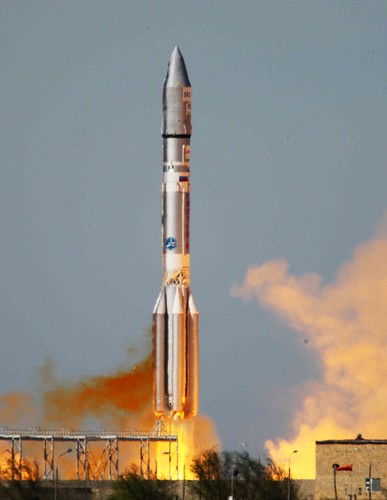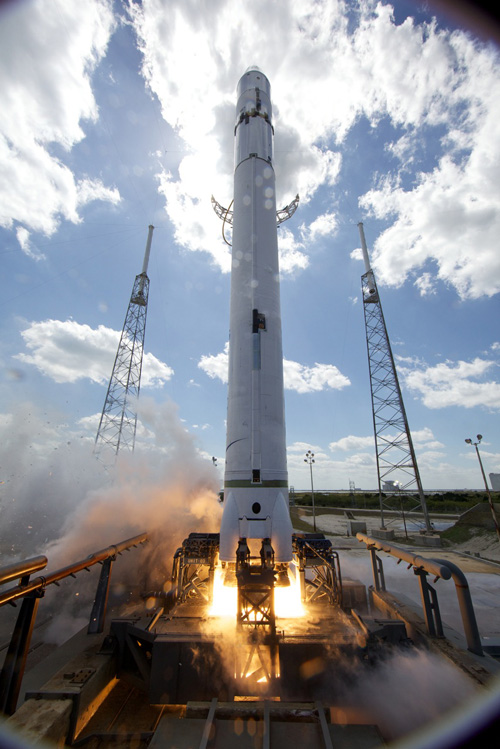Another Proton Launch Relief
Monday, April 26th, 2010

The SES-1 spacecraft was successfully launched and placed into geosynchronous transfer orbit on Saturday, 24 April 2010. Some detail on the spacecraft…
SES-1 is a hybrid C- and Ku-band spacecraft that will provide coverage of the 50 US states and is intended to replace SES’s existing AMC-2 and AMC-4 satellite at the orbital location of 101 degrees West. SES-1 is part of an SES contract with Orbital Sciences for the provision of up to five virtually identical satellites in order to replenish SES’ North American satellite fleet. The SES satellites are based on Orbital’s enhanced STAR 2.4 bus, the largest and most powerful communications satellite the company builds. The spacecraft will each carry 24 active C-band and 24 Ku-band transponders of 36 MHz capacity each. Six of the channels in each band can be cross-strapped to the opposite band, enabling new service capability. The spacecraft will generate approximately five kilowatts of payload power and have two 2.3 meter deployable reflectors.
So this is a replacement for AMC-4 at 101° West. Good-bye extended Ku-band and steerable South American beam. Hello, cross-strapping. That should make for some interesting combinations for customers.
There must be quite a bit of relief among the engineers at SES, what with AMC-4’s TWTA problems, which was an issue for 10 years, in addition to power issues surrounding the solar arrays. Besides AMC-4, the AMC-16 spacecraft was recently cited in their 1st quarter earnings report and summarized by Peter de Selding of Space News…
[T]he further reduction in power output aboard the AMC-16 satellite, which is fully leased by EchoStar Corp. of Englewood, Colo. AMC-16, launched in December 2004 and operated at 85 degrees west, is one of several older-model Lockheed Martin A2100 satellites that have suffered solar-power losses, especially during eclipse periods.
EchoStar and SES had agreed to a specific payment profile based on the satellite’s on-board capacity. With the most recent power loss on AMC-16 following a March eclipse period, the reduced power will cost SES slightly less than $10 million in revenue in 2010, Bausch said.
Other SES-owned A2100-model satellites have also suffered power losses, but not to the extent that commercial service was affected, Bausch said. Forecasts of how the problem might evolve are difficult because in the past, solar-array circuits that have failed have later returned to service, he said.
Had the Galaxy-15 command failure occured in the 1st quarter, he’d probably nail them on that one, too.
Enough bad news, on to the launch video!








